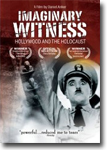 |
|
|||||||||||||||||||||||||||||||||||||||||||||||||||||||||||||
The Academy Award nomination of The Reader for Best Picture brought again to the forefront an issue that has now long challenged filmmakers: how to tackle a subject that for many people is still un-filmable. How should Hollywood, and artists in general, tackle the Holocaust, that moment in world history generally viewed as humanity at its worst? Should the subject even be addressed at all? This gripping, well-done documentary traces Hollywood's handling of this enormous subject from the 1930s, when rumors of Nazi atrocities first started to spread, up until the 2000s. It interweaves documentary footage with clips from over 40 studio films about the subject and documents how portrayals of the Holocaust have evolved over the past 60 years. Perhaps the most fascinating section of the film is at the beginning, regarding how Hollywood chose to (or perhaps better yet, chose not to) deal with the subject. This section serves as a blunt history lesson on America in the 1930s, when racism and anti-Semitism were still culturally acceptable if not the norm (there was a strong pro-German, pro-Nazi movement, called the "Bund" in the U.S. at this time). Even as the Nazi threat was becoming more and more apparent, it must be remembered that the majority of Americans wanted the U.S. to stay out of "Europe's war." Furthermore, Hollywood did not want to lose a prime overseas cash cow (Germany in the 1930s accounted for roughly 10% of Hollywood's overseas market). Thus, most films from Hollywood chose not to address the subject and even those which did, such as The Mortal Storm However, during the war, many of Hollywood's best directors (legends George Stevens and John Huston among them) served the Army as war correspondents. Many were on hand to record the moment when the death camps were liberated. Stevens, for example, captured for the world the horrors of Buchenwald. Later, Eisenhower personally flew the heads of the major studios to Europe so they could see first hand the horror that the Nazis tried to hide. This sobering ordeal made many of the studio heads (particularly Jack Warner) determined to use their art form to address the subject directly. From there, the film follows how Hollywood's willingness to deal with the subject matter has shifted over the past 60 years, from serious major studio films about anti-Semitism in the late 1940s (most notably Crossfire While the Schindler's List Though obviously hard to watch at times, Imaginary Witness Extras: None (none needed, really). |
|
|||||||||||||||||||||||||||||||||||||||||||||||||||||||||||||
|
||||||||||||||||||||||||||||||||||||||||||||||||||||||||||||||
| action | animation | art house/international | comedy | documentary | drama | family | horror/sci-fi | suspense | television | ||||||||||||||||||||||||||||||||||||||||||||||||||||||||||||||
| contact | home | ||||||||||||||||||||||||||||||||||||||||||||||||||||||||||||||


